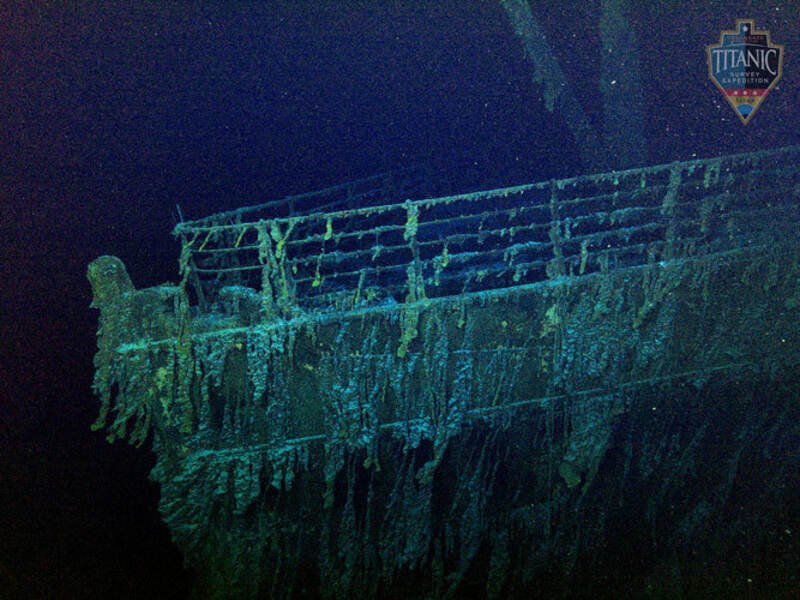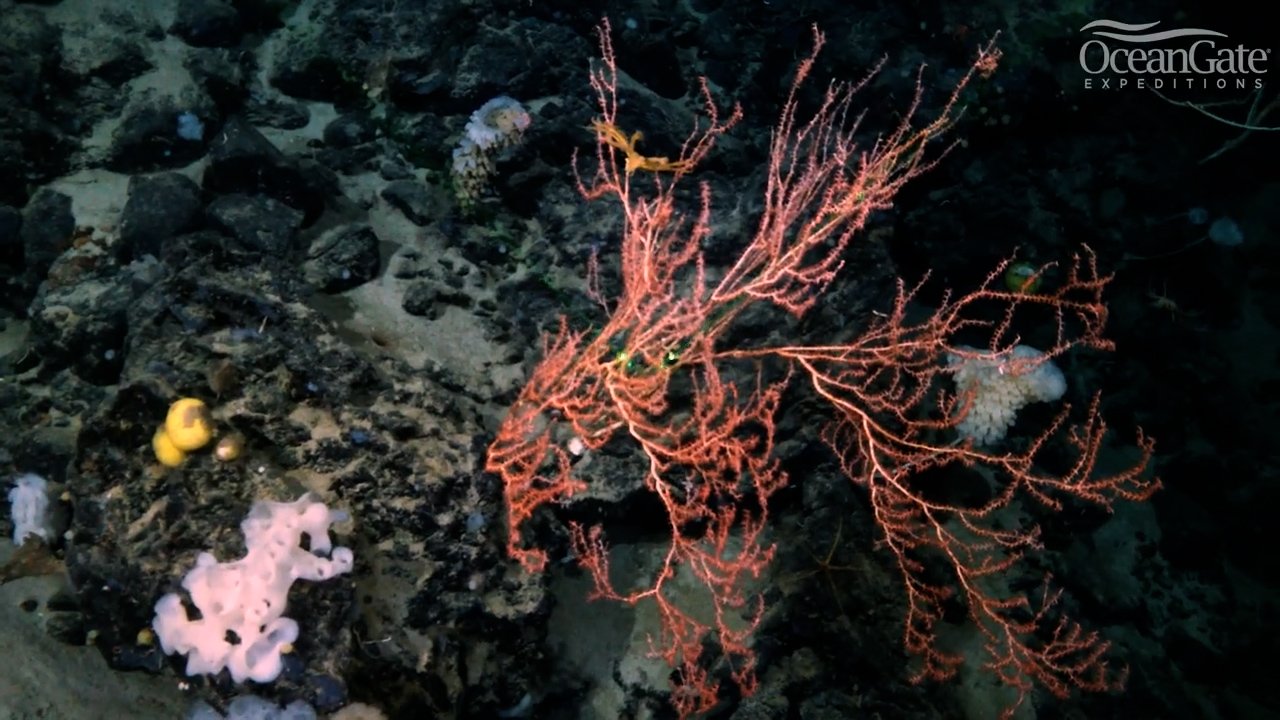Titanic Researchers Unravel a Decades-Old Mystery and Use Rayfin Subsea Camera to Capture Footage of New Ecosystem
At a depth of almost 4,000 meters beneath the surface of the North Atlantic Ocean, the wreckage of the RMS Titanic lies scattered across the muddy seafloor. The iron structures of the large bow and stern pieces are now sustenance for bacteria and chemical processes in the deep ocean and are gradually deteriorating. OceanGate Expeditions have used a Rayfin Mk2 Benthic subsea camera to document the condition of the wreck and the marine life forms that inhabit the wreck and surrounding area. OceanGate’s recent exploration of Nargeolet-Fanning Ridge demonstrated that the ecology of the region is thriving and more diverse than previously understood. The Mk2 camera captured stunning video of this site which OceanGate has shared with the world.
Documenting the Titanic & Surrounding Marine Life
OceanGate Expeditions and its scientific team completed their second research season this past summer. The annual trips are focused on documenting the condition of the 110-year-old Titanic shipwreck, a tragic piece of history at sea. While year one concentrated solely on this effort, in year two the team expanded their research to cataloging the marine life surrounding the wreckage. One of the most significant discoveries they made was the Nargeolet-Fanning Ridge, a previously unexplored basalt formation that was teeming with life. The discovery also helped to solve a decades-old puzzle.
The Mystery of the Sonar Blip
In 1996, while on an expedition to the Titanic, submersible pilot PH Nargeolet detected a sonar blip emanating from a site near the wreck. The source of the blip was unclear at the time, leaving many questions unanswered. This past summer, Nargeolet was part of the team that finally provided the answers to this long-standing mystery.
The data collected during the 2022 summer dives revealed that the blip originated from a volcanic ridge, which is home to a diverse range of deep-sea creatures. Nargeolet, who was excited to explore the area, said, "On the sonar, this could have been any number of things, including the potential of it being another shipwreck. It was amazing to explore this area and find this fascinating volcanic formation teeming with so much life."
The newly discovered basalt formation has been provisionally named Nargeolet-Fanning Ridge, in recognition of the roles played by PH Nargeolet and Oisin Fanning, an Irish energy industry executive who served as a mission specialist on this year's expedition.
Exploring the Biodiversity of the Abyss
Newly discovered marine life near Titanic wreck: corals, sponges, and more. (OceanGate Expeditions).
Basalt formations are created when molten lava cools and solidifies, creating a unique geological structure. This particular formation was located at a depth of nearly 3,000 meters, which is considered the abyssal zone of the ocean. It is one of the most challenging places to explore due to extreme pressure, low temperature, and lack of sunlight. Despite these challenges, the OceanGate team was able to uncover a hidden world that few have ever seen before.
The discovery adds important information to our understanding of biodiversity in the abyss, as the ecosystem boasts remarkable formations and a dense variety of life forms including sponges, bamboo corals, cold-water corals, squat lobsters, and fishes. The discovery suggests that this ecosystem is highly adapted to the unique conditions of the abyssal zone and has been thriving there for some time. This discovery also presents an opportunity to compare the marine biology on and around the Titanic to this newly revealed natural deep ocean reef. By examining the similarities and differences in the variety and concentration of life and overall ecosystems, researchers can gain a better understanding of our deep-sea environments.
Capturing the Ecosystem with the Rayfin Subsea Camera
Footage of the newly discovered abyssal ecosystem was captured by SubC Imaging’s Rayfin Mk2 camera mounted to OceanGate Expeditiion’s Titan submersible. The Titan submersible is a deep-sea research vessel designed for exploring depths of up to 4,000 meters (13,123 feet). It is a manned submersible that can carry as many as five people: a pilot and four passengers.
Corals and other marine creatures have found a home on a reef near the Titanic wreckage (OceanGate Expeditions).
In addition to the high-definition 4K deep-sea camera, SubC Aquorea LEDs and MantaRay Parallel Lasers are mounted to OceanGate Expeditiaon’s Titan submersible. The LEDs play a vital role in illuminating the dark waters, enabling the team to capture clear images and videos. Meanwhile, the lasers serve as a reference for scale, allowing the researchers to accurately measure the size of the flora and fauna they observe through the viewport of Titan and when reviewing collected footage. The SubC Imaging equipment has been used for a number of years as part of the longitudinal study of the Titanic and the surrounding area.
"SubC Imaging’s 4K Rayfin camera and lighting equipment let us bring amazing high-res images of the world’s most famous shipwreck and other deep-ocean discoveries to Titanic fans around the world. We’re grateful to work with the terrific team at SubC Imaging,” said OceanGate Expeditions President and Chief Submersible Pilot Stockton Rush.
Conclusion
OceanGate Expeditions’ recent discovery of a biodiverse abyssal ecosystem on a previously unknown basalt formation near the Titanic is a meaningful contribution to the field of oceanography. The team's dedication to exploration and discovery has provided valuable insights into the mysteries of the ocean and the life that inhabits it. These findings highlight the importance of continued ocean exploration and research and the need to protect our oceans for future generations.
In 2023, OceanGate Expeditions will carry on with its ongoing research of the Titanic and the surrounding areas, with the help of the crew, scientific team, and citizen explorers who will serve as Mission Specialists.




